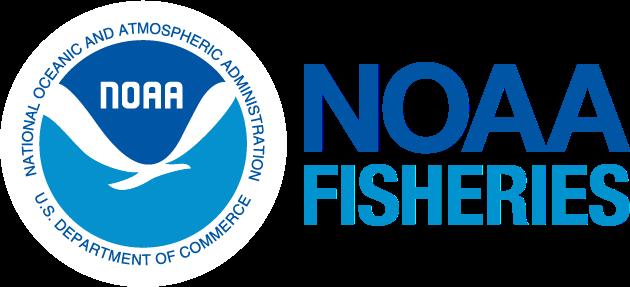
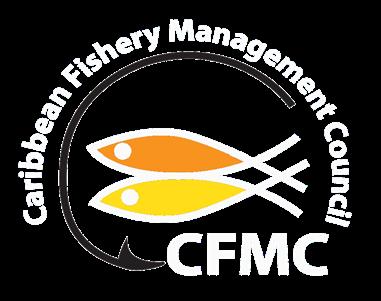
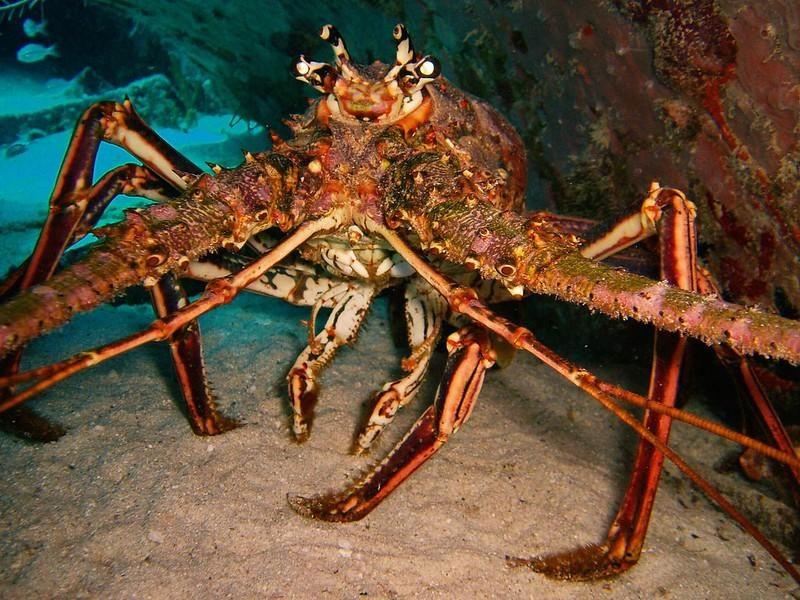




María López-Mercer, NMFS SERO
187th CFMC Meeting
Isla Verde, Puerto Rico
August 12-13, 2025

• Overfishing Determination and NMFS/CFMC responsibilities
o What does it mean for the spiny lobster to be undergoing overfishing
• Annual catch limit (ACL) overages, accountability measures (AMs) and NMFS/CFMC responsibilities
o What are the current AMs and why are they not working for the Puerto Rico spiny lobster
o What needs to be done
Consider options to change AMs
Consider additional management measures to end overfishing

Other: ongoing stock assessment and new catch advice

❖ Puerto Rico FMP, as amended, specified overfishing and overfished status determination criteria for the Puerto Rico Caribbean spiny lobster stock.
For spiny lobster, the overfishing limit (OFL) is based on the combined federal and territorial landings reported by Puerto Rico commercial fishermen, and NMFS uses those data to monitor landings relative to that reference point.
• In years when the stock is assessed:
■ Caribbean spiny lobster is subject to overfishing if the fishing mortality rate (F) exceeds the maximum fishing mortality threshold (MFMT) = FMSY proxy.
■ Caribbean spiny lobster is overfished if stock size (or spawning stock biomass (SSB)) is less than the minimum stock size threshold (MSST) = 0.75*SSBMFMT.
• In years when the stock is not assessed:
○ Caribbean spiny lobster is determined to be subject to overfishing if landings exceed the OFL.


❖ Southeast Data, Assessment, and Review (SEDAR 57) assessed spiny lobster, using landings and length data through 2016.
● Supported a determination that the stock was not subject to overfishing and not overfished.
● Assessment was accepted by SSC as suitable for management and endorsed by the Council.
❖ Operational stock assessment (SEDAR 57 Update Assessment) conducted in 2022.
● Overfishing and overfished SDC did not change since SEDAR 57, but numerical estimates of MFMT and MSST were revised (due to additional years of data added to the model - used landings and length data through 2021).
● Supported a determination that the stock is not overfished. Council informed about stock being subject to overfishing in 2024.
● Assessment was accepted by the SSC as suitable for management and endorsed by the Council.


❖ Non-Assessment Year determination conducted in 2025
● A review of the most recent commercial landings available (2023) relative to the overfishing limit indicates that the lobster continues to be undergoing overfishing.
○ Total adjusted commercial landings of spiny lobster in Puerto Rico in 2023 are 696,121 pounds (lbs) whole weight (ww), which is 158% of the 440,803 lbs ww OFL (Framework Amendment 1 for 2023) and 163% of the current 426,858 lbs ww OFL ( Framework Amendment 2).
❖ SEDAR 91 - Currently in progress. SSC will review in early September. 2025.
➢ The data workshop removed outliers and modified the expansion factors for spiny lobster landings in Puerto Rico.
➢ Until this is complete, the ACL/OFL monitoring process would use the original landings (with outliers still in) and expansion factors recommended by the SSC (average 2014-2019).
Magnuson-Stevens Conservation and Management Act (MSA) - upon notification that a stock is undergoing overfishing, a Council should begin work to end the overfishing immediately.


Section 303(a)(15) of the MSA requires the FMP to establish a mechanism for specifying ACLs at a level that ensures overfishing does not occur in the fishery, including measures to ensure accountability.
• For spiny lobster, the ACL is based on the combined federal and territorial landings reported by Puerto Rico commercial fishermen, and NMFS uses those data to monitor landings relative to that reference point.
• ACLs for spiny lobster first established in 2012; then revised in the Puerto Rico FMP, implemented in 2022.
• ACLs for spiny lobster were again revised through Framework Action 1 (2023) and later on, through Framework Action 2 (2024)
Annual Catch Limit Monitoring
• Commercial landings of spiny lobster in Puerto Rico are not monitored in-season, only post-season.
• Recreational landings are not currently monitored or reported.
• The commercial and recreational sectors are managed under a stock ACL and a post-season accountability measure (AM) for the entire stock.
• Commercial landings provided by the Puerto Rico DNER experience a one to two year delay in availability.
• Puerto Rico landings are adjusted using an expansion factor determined by DNER, which is based on intercept sampling of commercial fishermen.


Accountability Measures (AMs)
• MSA requires that AMs be established for all federally managed stocks.
• AMs are management controls to prevent ACLs from being exceeded and to correct or mitigate overages of the ACL if they occur.
• AMs are separated into 2 parts: the trigger and the application
○ Current AM: For the spiny lobster stocks, the most recent 3-year average landings are compared to the average ACLs during that same time period. If average landings exceed the average ACL and the exceedance is due to increased catch and not enhanced reporting, then NMFS will reduce the length of the fishing season within the current fishing year by the amount necessary to prevent average landings from exceeding the ACL for the current fishing year.
• AM-based closure only applicable in federal waters (9-200 nm).
• Vast majority of harvest occurs in state waters (0-9 nm), which remain open to harvest of spiny lobster.
Applying an AM that closes harvest in federal waters is not sufficient to fully constrain total spiny lobster landings to the applicable ACL unless Puerto Rico implements compatible regulations in state waters.

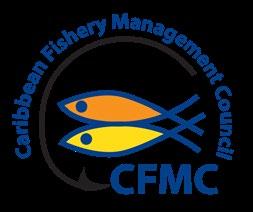
Spiny lobster landings in federal, state, and unknown areas for 2012-2023
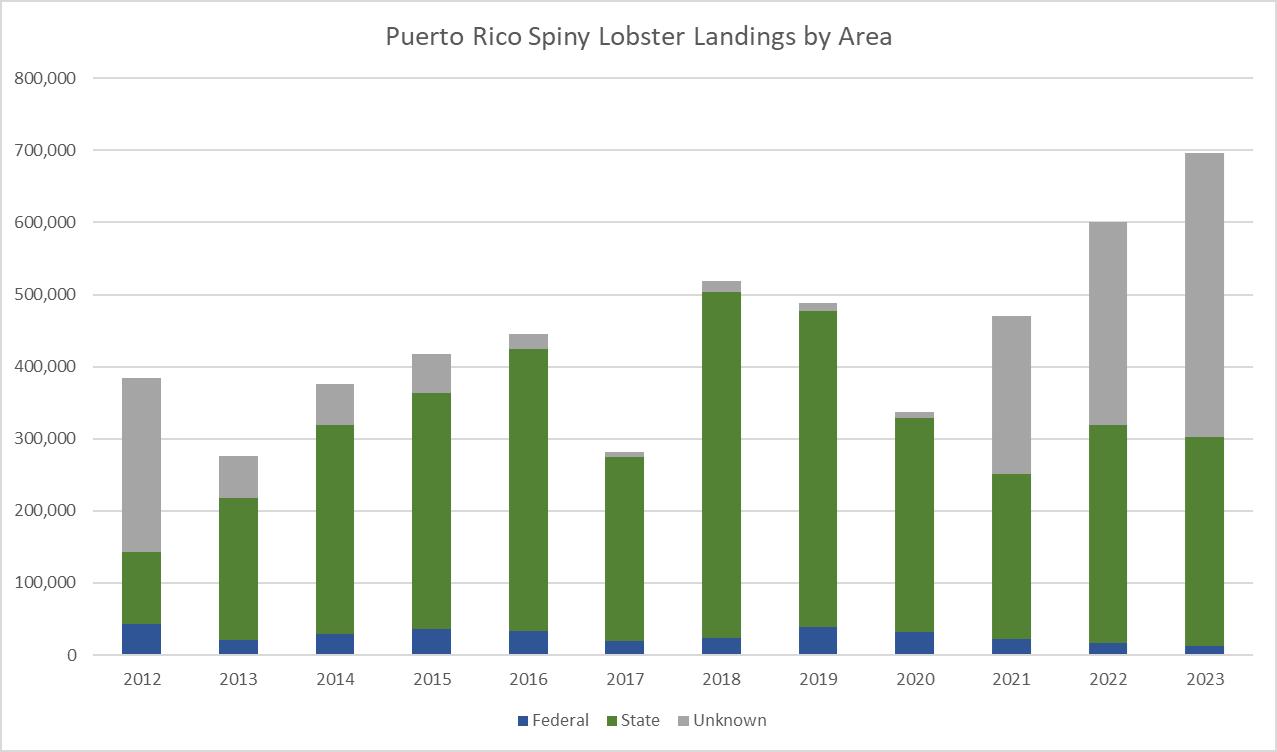


ACL overages in recent years
• 2016 (closed 22 days)
• 2017 (closed 24 days)
• 2019 (no closure due to hurricane recovery)
• 2020 (no closure due to pandemic and earthquakes)
• 2021 (closed 40 days)
• 2022 (closed 81 days)
• 2024 (no closure due to delays in data)
• 2025 - The 3-year average of the most recent commercial landings of Puerto Rico spiny lobster has exceeded the 3-year average of the applicable ACLs. The exceedance is attributed to increases in harvest, rather than to improved data collection or monitoring.
○ Based on current harvest patterns, it is expected that landings will continue to exceed the applicable ACL under current regulations.


National Standard 1 Guidelines state that if the ACL is exceeded more than once in a four-year period, then the system of ACLs and AMs should be reevaluated and modified as necessary, to improve its performance and effectiveness.
• Given recent overages of the ACL in addition to time lags in receiving commercial landings data, the CFMC and NMFS need to consider new management measures and alternatives to the current AM to ensure that ACLs are not exceeded on a regular basis.
○ SEDAR 91 for Puerto Rico, St. Croix, and St. Thomas/St. John (SEDAR 91) currently in progress.
■ If accepted for management use, results from SEDAR 91, including an updated ACL, would be considered as best scientific information available for the spiny lobster stocks, and could be incorporated into an amendment to the Puerto Rico FMP.
■ Results of SEDAR 91 are expected to be available for the Scientific and Statistical Committee to review in September 2025 and will be presented to the Council in December 2025.

1. No action – An AM is triggered when the average landings from the most recent 3-years exceed the average ACLs in place during those years and the exceedance is due to increased catch and not enhanced reporting.
Pros of Option 1:
• This AM process is already established.
Cons of Option 1:
• If landings data are not available in a timely manner, then the monitoring occurs later in the year, and may not be able to constrain landings as needed.
2. Trigger an AM if the ACL is exceeded (using the current trigger process) and the fishery-dependent abundance trend (size composition, catch-per-unit-effort [CPUE]) is declining over the same time period.
Pros of Option 2:
• Uses additional data to inform the AM trigger that may better reflect the actual condition and trends of the spiny lobster population.
Cons of Option 2:
• Fishery-dependent data for spiny lobster is limited, may be insufficient, may not be timely, or similarly, annual differences in lobster size might not be substantial due to existing size limits.

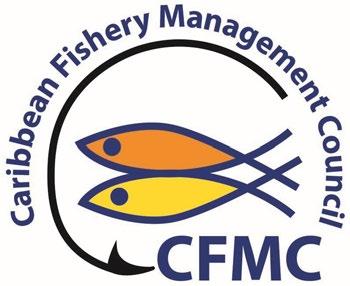

• Create an Interdisciplinary Planning Team to amend the Puerto Rico FMP to address the SEDAR 91 stock assessment and adjust accountability measures.
• Discuss a timeline for development of the action and options to be included in the amendment.
o Are their options you would like to consider for addressing overfishing (e.g., trip limits, seasonal restrictions, etc.)?
o Are their additional ideas you have for adjusting accountability measures?
